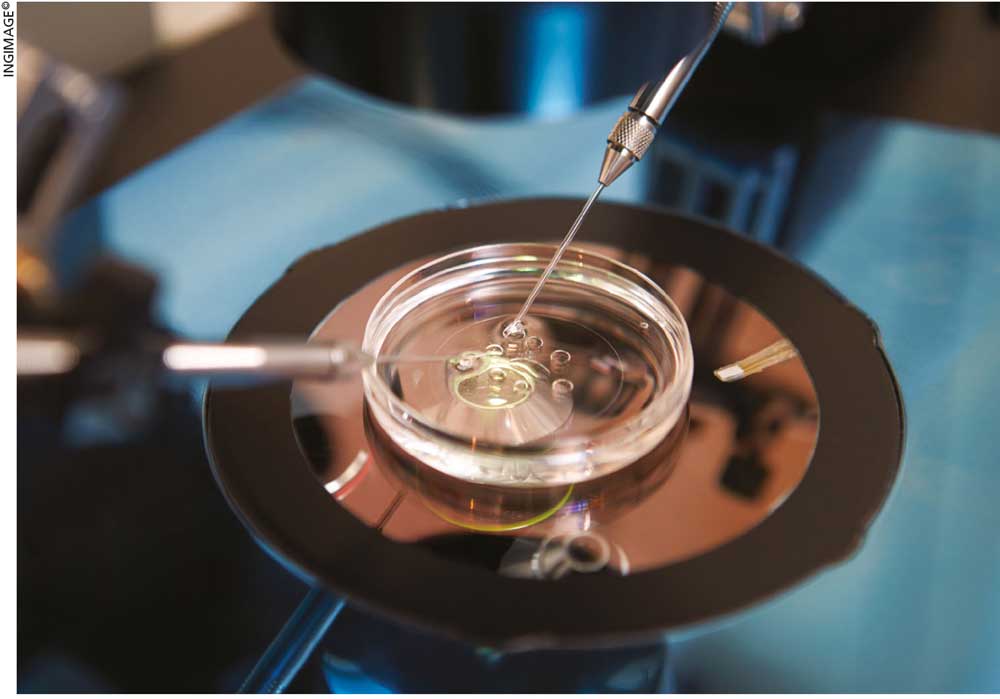REPRODUCTIVE TECH
BABY TECHNOLOGY DELIVERS
Ruwandi Perera explains how human reproduction is changing with ART

The UN has marked 1 June as ‘Global Day of Parents’ to honour mothers and fathers, and the sacrifices they make to raise and mould their children. However, this day can also be viewed through a different lens given the staggering rate of infertility among couples nowadays.
The WHO notes that between 48 million couples and 186 million individuals globally have infertility issues (that’s about 15% of reproductive age couples). While reasons vary from dietary and lifestyle changes to late marriage, a solution to the global issue of childlessness may lie in technology.
Assisted Reproductive Technology (ART) isn’t new. The first in vitro fertilisation (IVF) baby was born in 1978 and technology has since developed with comparatively higher success rates. Though its methods are advanced however, ART is still expensive and success isn’t guaranteed.
On average, a woman may go through three or four failed cycles of intrauterine insemination (IUI) and six rounds of IVF before she conceives successfully. That’s a lot of surgical procedures and plenty of money, and many couples hesitate to use the technology because it’s unaffordable.
Yet, hope is not lost for potential parents.
On the one hand, many innovative digital tools have entered the market to make the artificial conception process easier, more transparent and in some cases quite affordable. On the other hand, the ART market has become a profit making machine that thrives on the helplessness of childless couples.
The ART space is diverse and includes several types of fertility treatments that range from manipulating egg and sperm production, to embryo development and transfer – all with the goal of increasing the likelihood of a successful pregnancy.
Technology has come a long way and doctors are now able to extract a woman’s eggs, fertilise them in a lab and transfer the embryo to a uterus.
Some treatments use laparoscopic surgery to insert the reproductive cells straight into the fallopian tube while others inject a single sperm directly to the centre of an egg using a needle. Others use minor surgical procedures to assist the reproductive process.
An increasing trend in the West is the freezing of embryos and eggs. In the former case, embryos are created and frozen until the parents are ready to have a child. These are then thawed and inserted into a uterus.
In the latter case, a woman’s eggs are extracted and frozen until she is ready to have children – this preserves her reproductive ability beyond the reproductive age. Sperm freezing is also available either for one’s own use or to donate to a sperm bank.
AI is believed to have the potential to revolutionise the ART ecosystem although it has not yet been widely used. Specialists have been known to use artificial intelligence to select and predict specific reproductive cells to ensure that fertilisation has a higher probability.
Although it is not widely used, this kind of technology will increase pregnancy rates; reduce the utilisation of medical resources; and most importantly, make the process cheaper and more accessible to couples.
Further, using AI with image analysis can help doctors reduce errors in selecting viable sperms, eggs and embryos, thereby ensuring successful and healthier births.
Some fertility boosting techniques use digital tools that come under the category of ‘femtech,’ which focusses on female health. Simple menstrual cycle tracking apps such as Flo, Clue and Glow are easy to use and cheap to download, and use AI to predict unique patterns in a woman’s cycle.
Men too have many smartphone utilisation apps that help analyse semen and their fertility status without consulting a doctor.
All these advancements in ART have created a market for technologies, procedures, eggs and sperms, as well as donors, surrogates and gestational carriers. And there are various online platforms today that offer a complete shopping experience for baby making, and connecting future parents to donors and specialists in the reproductive technology arena.
But is ART ethical?
The absence of natural reproduction raises many questions, and there have been numerous religious and social debates on this subject with no consensus reached.
While digital fertility solutions might sound like something from a sci-fi movie, there’s no denying that technology has helped achieve what traditional medical science has failed to accomplish.
As for the ethics of the matter, humans are still in control of the reproductive process – so all seems well for now.



